Ukrainian national costume
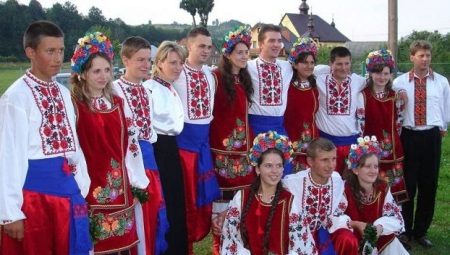
Any folk costume embodies the self-consciousness of the nation, her aesthetic ideal, aspirations and values. This phenomenon has been developing over the centuries, and it is difficult to overestimate its historical and artistic significance. In this regard, the Ukrainian national costume is a multifaceted phenomenon. It embodies a Slavic soul, an oriental love for bright colors and, at the same time, a western touch of sophisticated elegance.
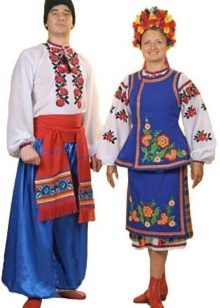
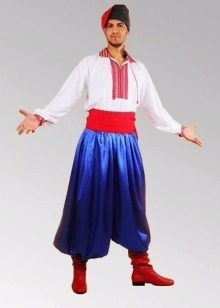
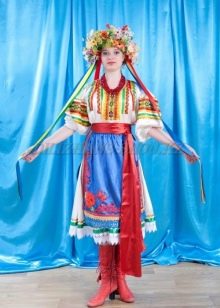
History
Ukrainian national costume traces its history back to ancient times, when the Slavic tribes from the Dnieper region (at that time had not yet united into Kievan Rus) had such a piece of clothing as an embroidered shirt, which was worn without any outer clothing. The formation of the costume continued continuously until the 19th century, while it was closely intertwined with other cultural traditions.
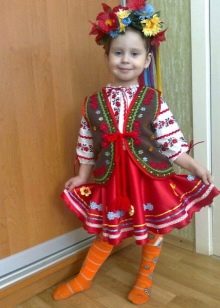
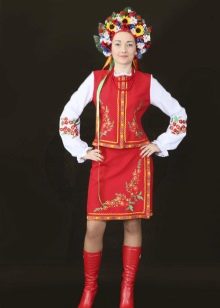
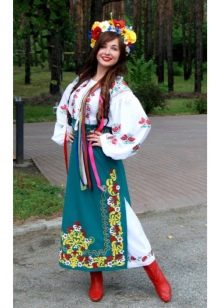
It was the culture of the ancient Slavs that became the cradle for the Ukrainian, as well as for the Russian, Belarusian style of clothing. It is not for nothing that these nationalities have so much in common both in history and in national dress. Ukrainian costume has many faces, in each region of the country (Polesie, Dnieper, Carpathians, etc.) it has its own characteristic features. This is due, among other things, to the fact that Ukraine borders on Moldova, Poland and reflected the features of neighboring peoples in clothing.
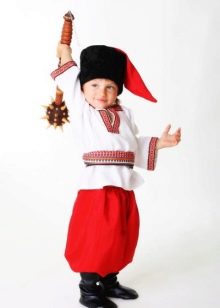
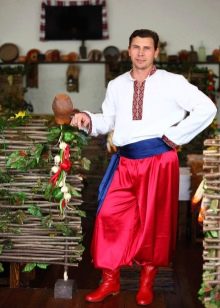

Ukrainians themselves treat their folk costume in a special way, reverently - items of this clothing (at least embroidered shirt) can be found in almost every family.
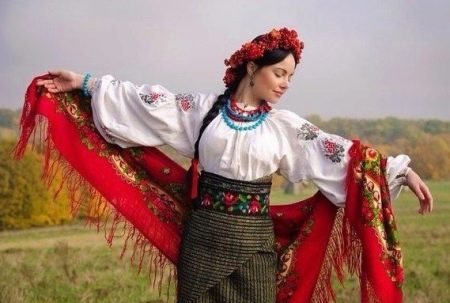
Peculiarities
The national costume of Ukraine is distinguished by the following characteristic features:
- A simple cut that combines beauty and practicality.
- Saturation with decor (hand embroidery, lace, braid).
- The clothes are made from natural fabrics.
- Bright contrasting colors.
- The outfit is organically complemented by original shoes and accessories.
- Ornaments, patterns, color schemes carry a deep symbolic meaning.
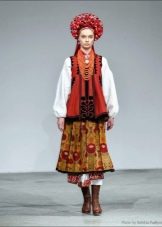
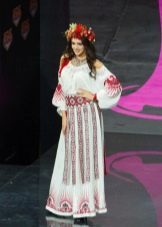
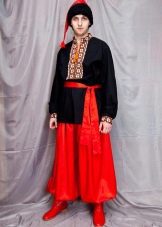
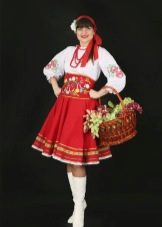
We should also dwell on the traditional embroidered shirt. Embroidery was not just a woman's handicraft, but a manifestation of the creative skill and talent of a peasant woman. This activity brought joy to the difficult life of a woman, through the color palette she could convey her feelings and faith in the best. Vyshyvanka is a very beautiful amulet. In ancient times, people believed that hand-embroidered symbols and drawings, possessing magical powers, could protect against evil forces. Ukrainians wore specially embroidered shirts and blouses mainly on holidays and for merry festivities.
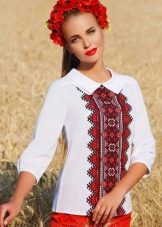
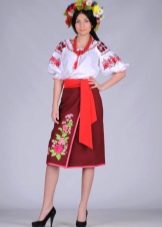
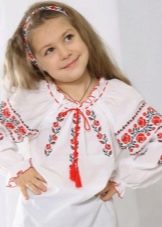
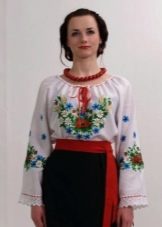
Strict geometric patterns were characteristic of men's clothing, which personified courage and daring. Women's patterns, on the other hand, were distinguished by intricacy, elegance, and complex interweaving of lines. Embroidery could depict flowers, grapevines, leaves, symbolizing love, youth, tenderness, innocence.
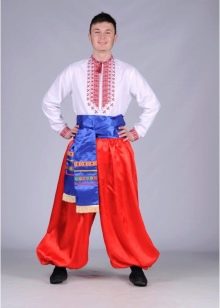
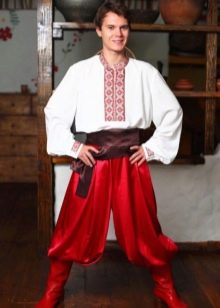
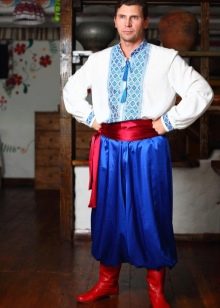
As for the general color scheme of the Ukrainian costume, it was background white or other light colors combined with red and other bright colors (azure, green, brick, smoky) of wreaths, ribbons, belts and other wardrobe items. With a variety of regional variants, a single artistic line is clearly traced.
Another important feature of the Ukrainian folk costume is its complexity. Each piece of clothing (be it underwear, top, headdress, sash, boots) fulfilled its purpose and was closely related to other things.
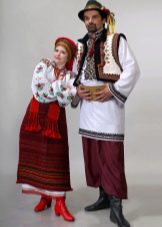
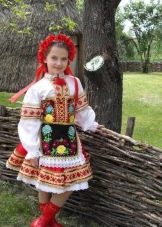
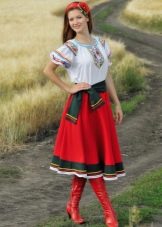
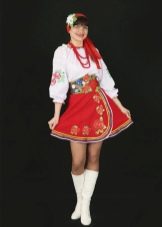
Varieties
The basis of the man's suit was a simple shirt made of coarse linen. Wide and short, in appearance it resembled a Russian blouse, only the neckline was located in the middle. Fold-over collar or bosom neckline was decorated with hand embroidery.

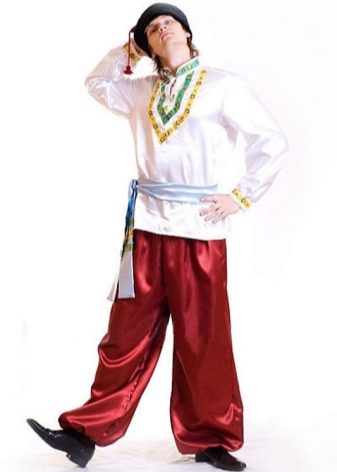
The shirt was traditionally tucked into wide trousers, which were fixed to the belt with a cord on a wide buckle. Woolen or canvas trousers were blue or red and were so wide that they looked like a sack. Such clothes were comfortable for everyday work, military service and, of course, for performing the traditional male dance - the hapak.
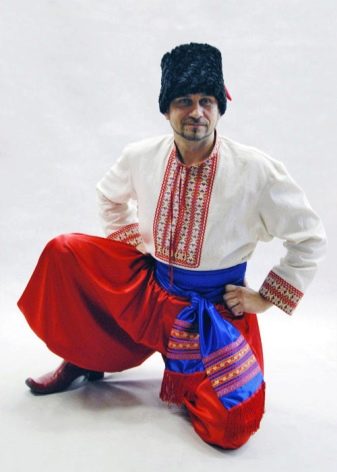
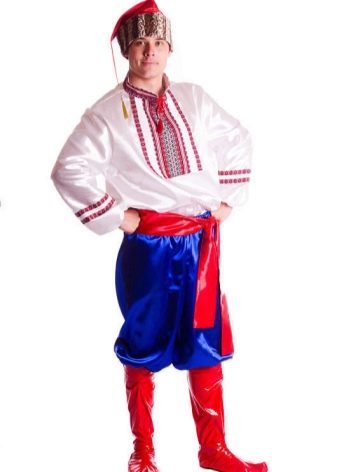
It should be noted that in the West of Ukraine men's trousers were, on the contrary, narrowed, similar to modern “pipes”.
Pants and shirt were girded with a wide sash, needlewomen embroidered it with intricate patterns (the belts were very long, fastened with hooks, it was indecent to walk unbelted). From above, the men put on a sheepskin jacket, which warmed well in the cold, without hindering movements.
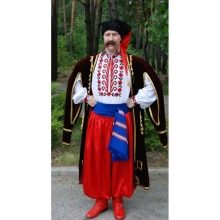
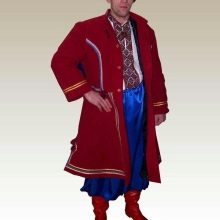
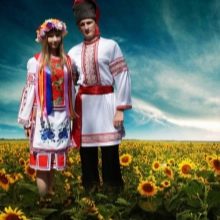
Women's national clothing of Ukraine is more diverse and sophisticated than men's. The Ukrainian shirt, or koshul, was longer than the men's one, and was certainly decorated with embroidery along the edge of the neckline, below and on the cuffs of the sleeves. The lower part of the koshul (pidtychka), in contrast to the upper, was sewn from coarse fabric. Dodilnya - a one-piece version - was worn exclusively on holidays. This shirt was sewn from an expensive snow-white linen. In general, the festive (dance or carnival) clothes of the Ukrainian woman looked extremely bright, original, they were distinguished by more luxurious embroidery.
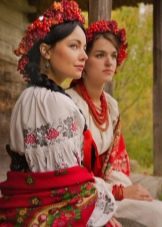
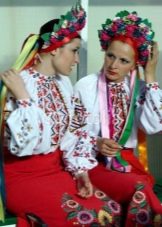
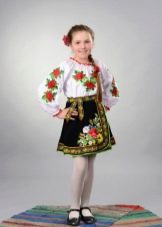
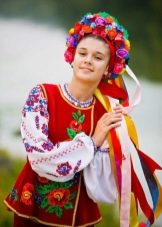
Young girls traditionally wore shirts without any outer clothing. They were girded with red ribbons or embroidered sashes. Married women must complement the outfit with a zhupan (this is a sleeveless jacket), as well as waist outerwear. It could be a jerk - a work item, up to three meters wide, which was gathered at the back in wide folds. Another option is a spare wheel, which consists of two parts, which are connected with strings. And finally, festive clothing - block - sewn from silk or brocade, later from wool with a checkered pattern. As a bottom, girls and women wore a long skirt of variegated colors - neva, over which there was always an apron embroidered with patterns.
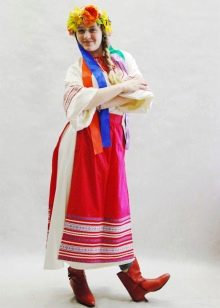
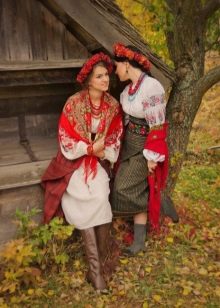
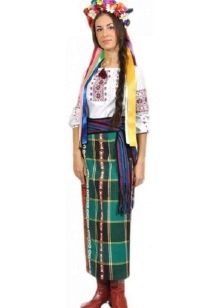
As for the children's national costume in Ukraine, it looked like an adult, although it had a number of differences. Boys and girls also wore embroidered shirts, which were sewn from rectangular fabrics (front, back and sleeves). Children's embroidered shirts were distinguished by a more modest ornament.

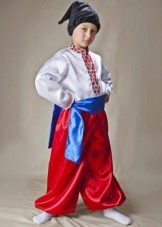
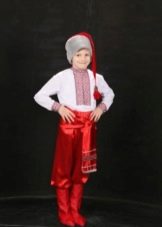
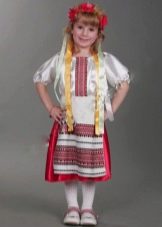
The girl, like women, also wore a ponytail, only her length was up to the knee or slightly higher. An embroidered apron was worn over it. The boy was dressed up in an embroidered shirt, blue trousers, girded with a wide silk sash. The embroidery on the shirt was more restrained than that of the girls. On their feet, children wore high-heeled boots of medium length, usually red.
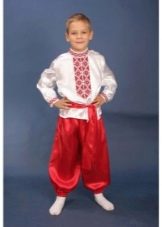

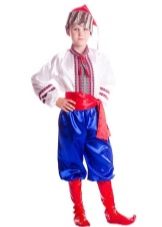
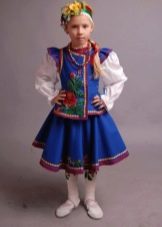
If the boys' headdress was optional, then for the girl it was a mandatory attribute. Little girls wore modest half-wreaths with ribbons, and girls of marriageable age wore lush wreaths like a crown. Married women always wore a headdress - an ochepok, and when heading to church or on a visit, they covered their heads with a scarf.
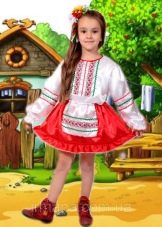
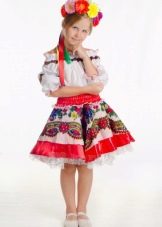
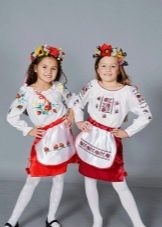
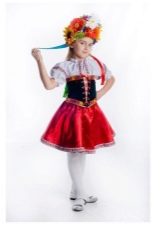
Elements of traditional Ukrainian style are very fashionable in modern clothes. This is expressed primarily in the decoration of clothing. The most popular are ethnic dresses made of light fabric with contrasting embroidery. For everyday options, this is a technique with satin stitch, a cross, for festive ones - with ribbons or beads.
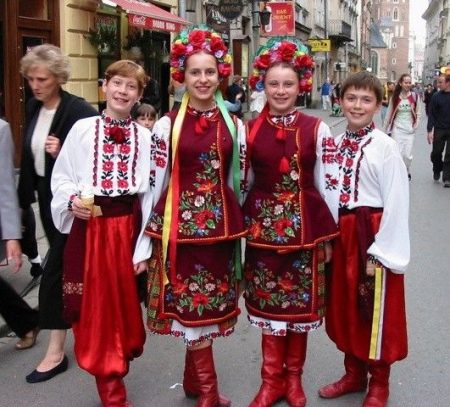
The elements
Let us describe in more detail some elements of Ukrainian folk clothing:
- Yupka - outerwear like a jacket.
- The corset is a women's sleeveless jacket, in different regions it had a special cut, color and ornament.
- Keptar is a similar variant with fur.
- Leibik is a woolen sleeveless jacket, popular in the West and North of Ukraine.
- Andarak is a self-woven red skirt decorated with a wide stripe of embroidery at the bottom.
- A reserve is a skirt for everyday wear, consisting of two fabric cuts, which are tied with a lace on the side.
- Plakhta is a festive version of a skirt made of expensive material (silk, brocade, wool), embroidered with bright unique patterns. Such a thing expressed the individuality of a woman.
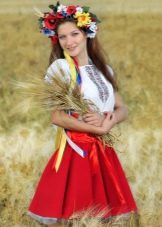
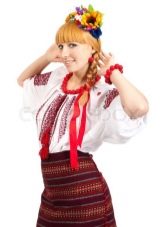


Textile
The Ukrainian costume is made of natural fabrics - linen and cotton, cambric and wool. Silk and cotton were brought from eastern countries, but at the same time, their own production of these fabrics was developing. In the urban environment, there were such specializations of artisans as silk workers, cloth makers and canvas makers. Other fabrics that were also used in the sewing of folk costumes were imported: taffeta and satin, calico and kumach and others.

Where to buy or rent?
Today, the national costume of Ukraine (for men, women or children) can be bought or rented in specialized stores or agencies. This outfit will make you stand out at any event, be it a wedding show or a carnival party. The children's kit is an original solution for a matinee in kindergarten or a school holiday. Your child is guaranteed to be in the spotlight.
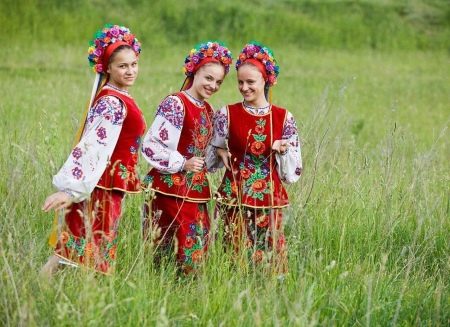
Images
An exquisite evening dress in the Ukrainian style, which will adorn any festive event. The straight, slightly fitted silhouette is complemented by luxurious wide sleeves gathered at the wrist. Beautiful embroidery with floral motifs accentuates the V-neck and chest. The embroidered golden lines are organically combined with the similar color shoes with the open toe. The dress, made of flowing silky fabric, has a classic length that slightly reveals the knees. The image is completed by a burgundy clutch with a decorative element also of Ukrainian style.
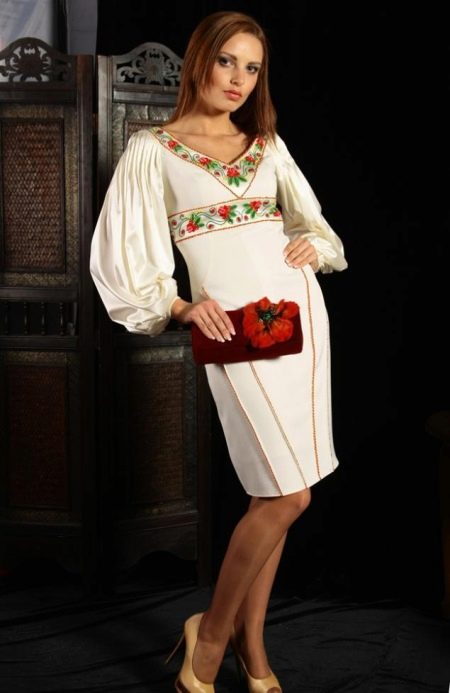
Look in the Vogue UA video for the images of Ukrainian women of the late 19th - early 20th centuries.








